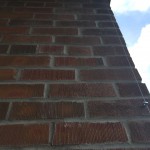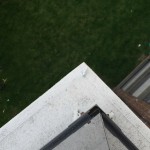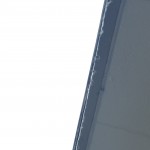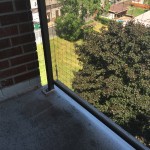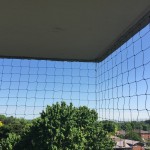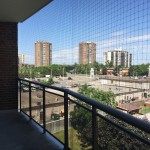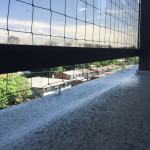I’ve been installing balcony netting for 17 years and I thought it was time to recap the work process, so that you understand at least the basics, which can help you when considering having one installed to keep pigeons away.
- Pigeon netting requires a mounting method that is firmly attached to the building structure. Without this the netting cannot be installed. One of the easiest way to tell whether a netting job was done by a professional or the multiman superintendent is to look at the netting support component. If it’s 2X4s, wooden sticks, velcro, cable ties, conduit pipe, ceiling hooks or curtain rods, it was the super or the next door handyman. Professional perimeter netting support is usually done by using aircraft cable that is attached to the building through tie wire wedge anchors that are drilled into the walls/railing/floors: Photos 1-5.
- Larger turns/corners should have a vertical support cable to facilitate a nice, clean turn of the netting: Photos 6-7.
- The netting should be installed taut, free of wrinkles, in a straight line: Photos 8+.
As far as the netting is concerned I’ve seen it all, tried it all and here is what I can tell you:
- Use polyethylene, knotted netting for longevity. Polypropylene, extruded/molded netting won’t last!
- Use black netting. Light color is more noticeable and it darkens over time and it also degrades prematurely.
Click here to find out the price for your balcony netting using our balcony netting quiz!

